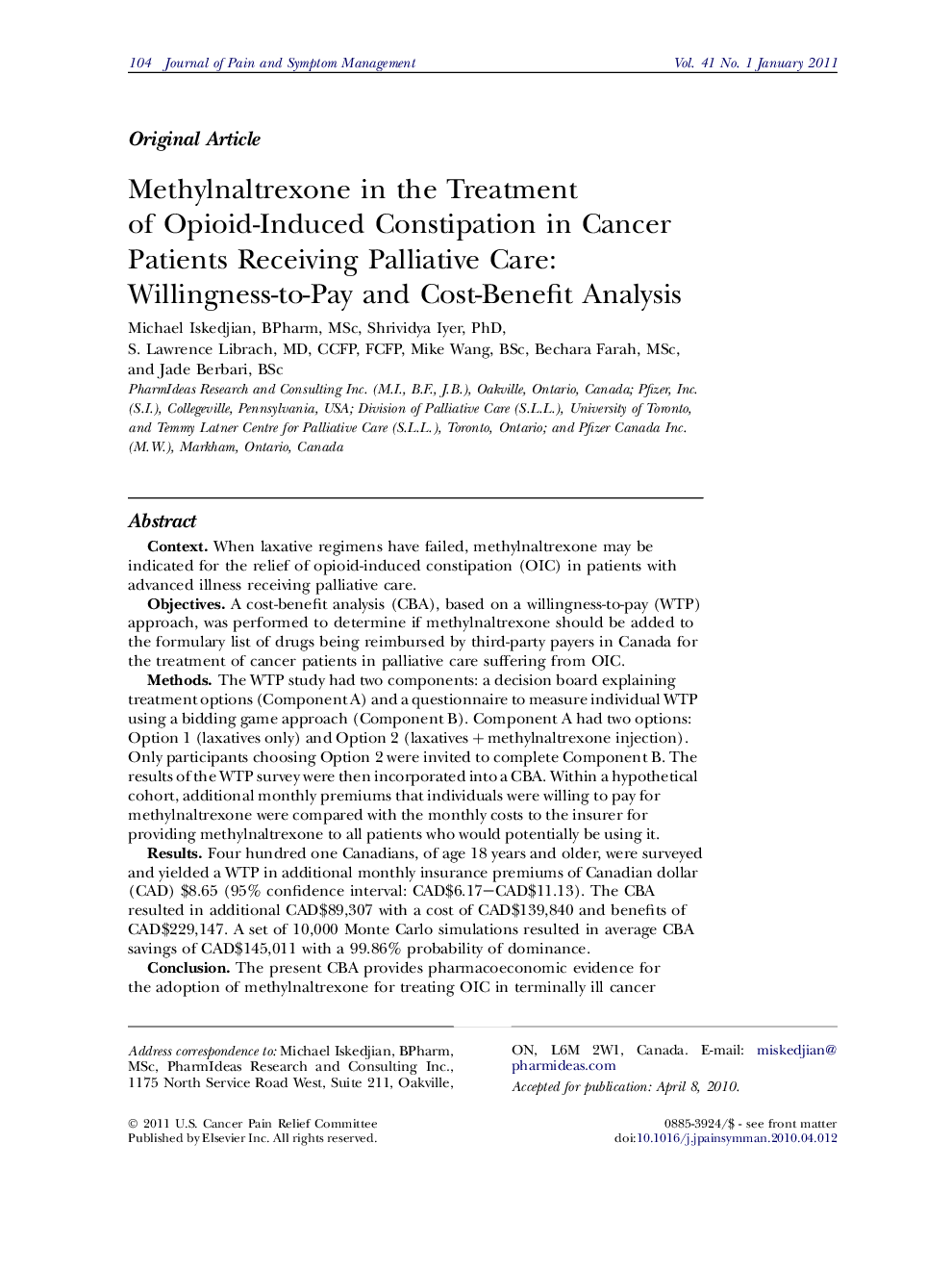| کد مقاله | کد نشریه | سال انتشار | مقاله انگلیسی | نسخه تمام متن |
|---|---|---|---|---|
| 2730298 | 1147240 | 2011 | 12 صفحه PDF | دانلود رایگان |

ContextWhen laxative regimens have failed, methylnaltrexone may be indicated for the relief of opioid-induced constipation (OIC) in patients with advanced illness receiving palliative care.ObjectivesA cost-benefit analysis (CBA), based on a willingness-to-pay (WTP) approach, was performed to determine if methylnaltrexone should be added to the formulary list of drugs being reimbursed by third-party payers in Canada for the treatment of cancer patients in palliative care suffering from OIC.MethodsThe WTP study had two components: a decision board explaining treatment options (Component A) and a questionnaire to measure individual WTP using a bidding game approach (Component B). Component A had two options: Option 1 (laxatives only) and Option 2 (laxatives + methylnaltrexone injection). Only participants choosing Option 2 were invited to complete Component B. The results of the WTP survey were then incorporated into a CBA. Within a hypothetical cohort, additional monthly premiums that individuals were willing to pay for methylnaltrexone were compared with the monthly costs to the insurer for providing methylnaltrexone to all patients who would potentially be using it.ResultsFour hundred one Canadians, of age 18 years and older, were surveyed and yielded a WTP in additional monthly insurance premiums of Canadian dollar (CAD) $8.65 (95% confidence interval: CAD$6.17–CAD$11.13). The CBA resulted in additional CAD$89,307 with a cost of CAD$139,840 and benefits of CAD$229,147. A set of 10,000 Monte Carlo simulations resulted in average CBA savings of CAD$145,011 with a 99.86% probability of dominance.ConclusionThe present CBA provides pharmacoeconomic evidence for the adoption of methylnaltrexone for treating OIC in terminally ill cancer patients.
Journal: Journal of Pain and Symptom Management - Volume 41, Issue 1, January 2011, Pages 104–115